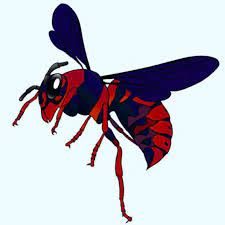by Hailey Moore
There used to be a cow at the barn that my cousin went to for horseback riding lessons. When I would go and visit her family she would always take me out to the field to see it. Every person at the barn treated it just as if it was a family dog, they would even brush it and give it baths. I was probably around seven or eight at the time so I found it a little weird at first but I liked that it was something we did together and started to look forward to it whenever I visited. Well, on one trip I didn’t see the cow in the field when we were pulling up to the barn and my mom began to explain where the cow “took a trip to”. Of course, at the time my favorite food was hamburgers so I was mortified when I found out that the cow “took a trip” to become my favorite food. I don’t think I ate a hamburger for about three months after that but then forgot one day and ate one. I still felt bad but I guess I was just too little at the time to remember to stay angry and hold my grudge.
This may seem like a silly story but it is something that raises a real question. Children, and maybe even some adults, do not know where their food is coming from or how it is being raised and processed. A survey was held in Missouri and Indiana asking residents of those states where hamburger comes from, 12.3% of the residents said that it came from pigs and 5.9% could not give an answer because they were unsure (Northrup). Another survey taken of 1,000 U.S. citizens from all 50 states showed that 48% of these adults did not know how chocolate milk is made and that 7% did in fact believe that it came from brown cows (Northrup). This shows the lack of food education that is received in the U.S. and if there are adults who truly believe that chocolate milk comes from brown cows what does this mean about their education on all other foods and that of their children and others.
If people are not aware of how cows are raised and processed then they can’t hold farms or processing facilities accountable if animal mistreatment or improper slaughter techniques take place. Improper techniques can lead to unsanitary conditions leading to the possibility of Salmonella or E. Coli outbreaks, due to the cows contracting diseases (CDC). It’s hard to fix something if you don’t know the basics behind it. These diseases are easily spread through farms that use methods related to factory farming, this is raising animals in small confined spaces, or controlled conditions.
Slaughter techniques have greatly advanced overtime to ensure that the animals are treated as humanly as possible. This includes a low anxiety atmosphere and a quick death to ensure the animals do not experience any pain. The Humane Farming Association is an organization that campaigns against factory farming. They provide information on all types of slaughterhouses, including cows, and provide videos and images to inform people on how cows are raised and how slaughterhouses are run. Their purpose is to provide education to as many people as they can and that if inhumane farming practices are found, that action should be taken against them. For children, they have coloring and storybooks to gently introduce and teach children about animal lives and what happens when an animal becomes food.
If you do not know the process of how cows are raised and slaughtered please take a minute to watch the video linked below. Dr. Temple Grandin explains the step by step process of cows arriving at a slaughterhouse, how they are kept in a low-stress atmosphere, the use of a bolt gun to quickly end their life without pain, how they are properly butchered, to the final stage of meat packaging from inside of a slaughterhouse. If you are a parent and have not yet had this talk with your children consider visiting the Humane Farming Association and looking at their coloring books or stories so that they can be introduced to this process and are not shocked one day when they could possibly find out from someone else or from a graphic video online that they were not expecting. If you know the slaughter processes but have questions on what the labeling on the meat you are consuming means like, Natural, Organic, and Pasture-raised the article linked below does a thorough job of describing these terms in detail. If you do or don’t eat meat it is still important that you understand that everything possible is done in order to make sure these animals are treated humanely.
Cow raising and slaughter, warning contains graphic images: https://www.youtube.com/watch?v=VMqYYXswono
Terms on labeling of packages described in-depth:
https://certifiedhumane.org/meat-labels-like-organic-grass-fed-actually-mean-whether-care/
Works cited
“Humane Education.” HFA, The Humane Farming Association Campaign Against Factory Farming, 2021, http://www.hfa.org/humaneEducation.html.
Meatnewsnetwork. “Video Tour of Beef Plant Featuring Temple Grandin.” YouTube, North American Meat Institute, 23 Aug. 2012, http://www.youtube.com/watch?v=VMqYYXswono.
Northrup, Laura. “Dairy Industry Says 48% of Americans Don’t Know Where Chocolate Milk Comes From.” Consumer Reports, 15 June 2017, http://www.consumerreports.org/consumerist/10281160/.
“Salmonellosis and Ground Beef.” Centers for Disease Control and Prevention, Centers for Disease Control and Prevention, 8 Oct. 2020, http://www.cdc.gov/ncezid/dfwed/prevention-priorities/salmonella-and-ground-beef.html.
Categories: Featured

